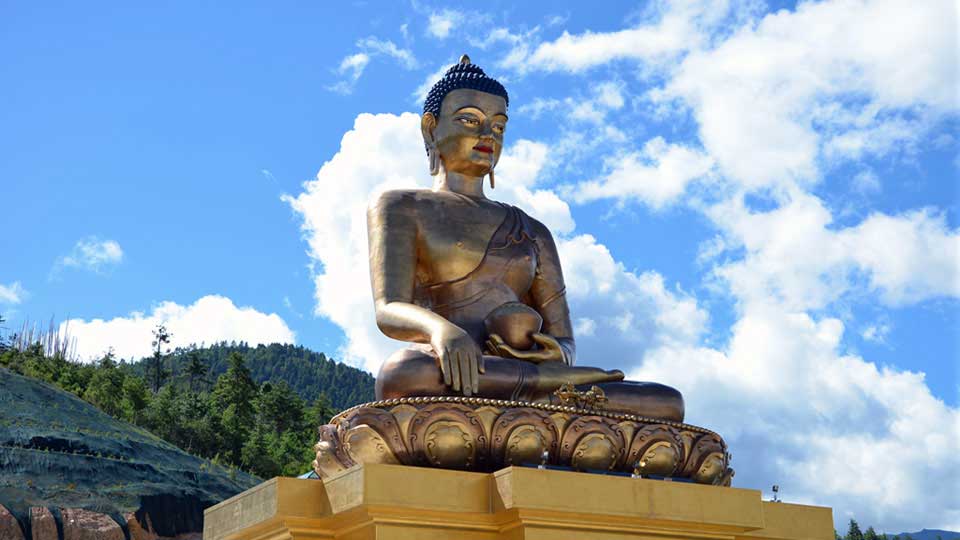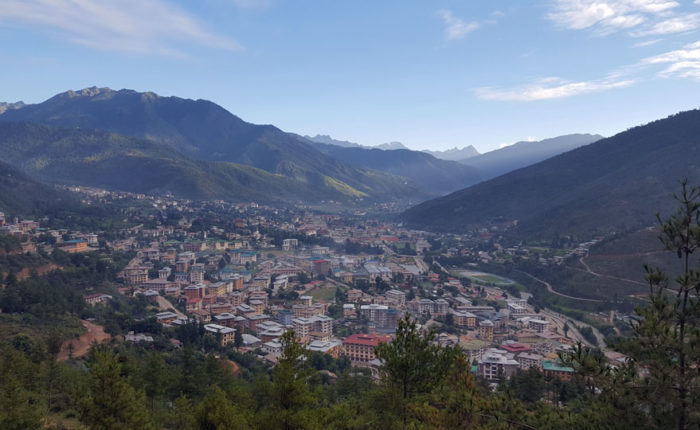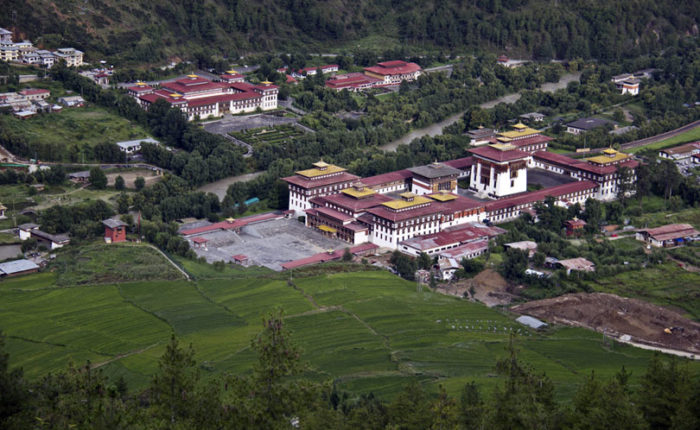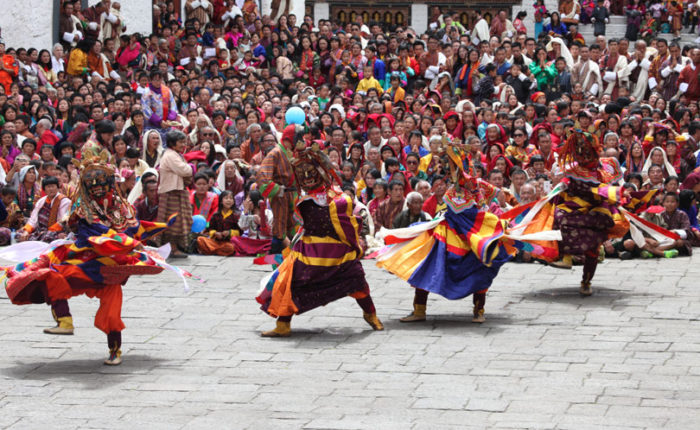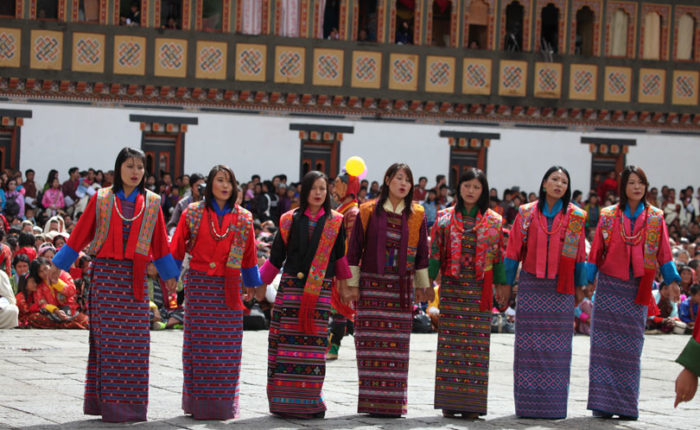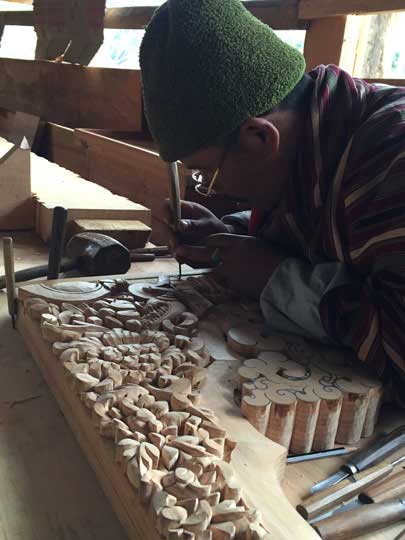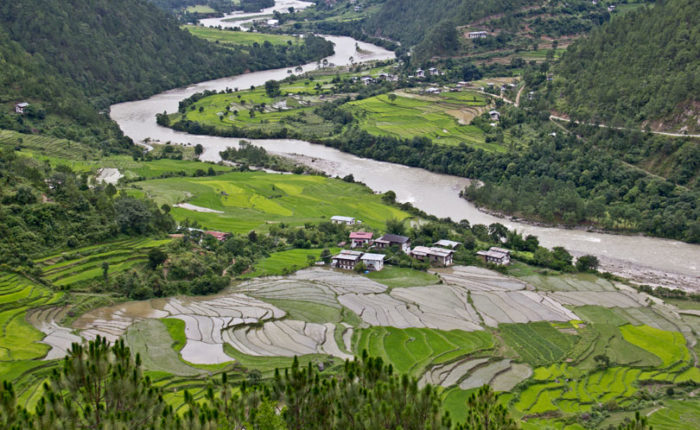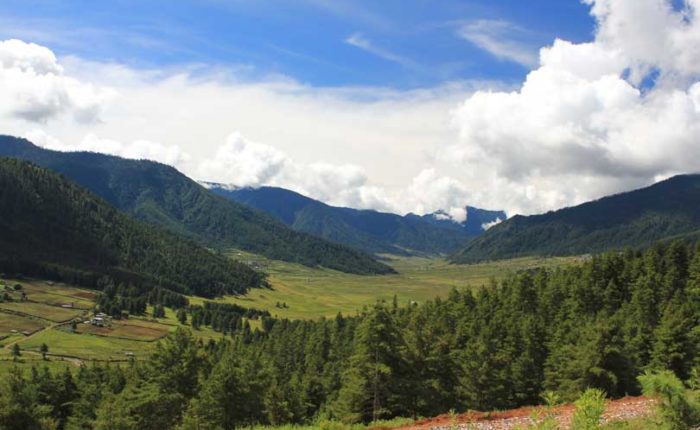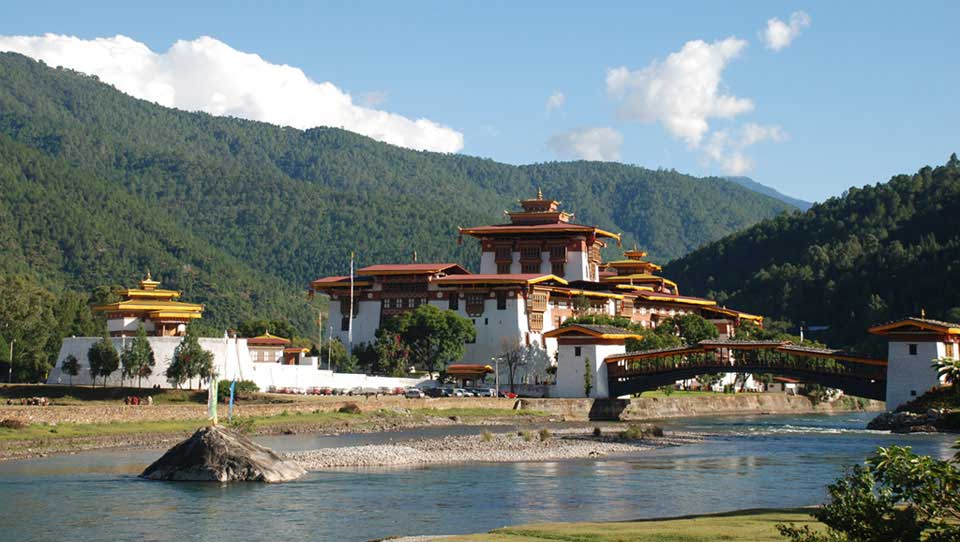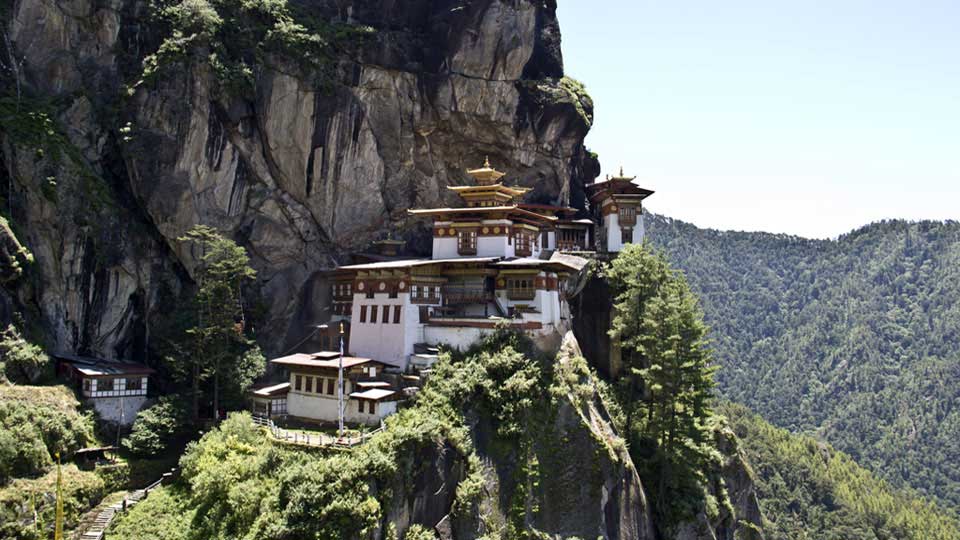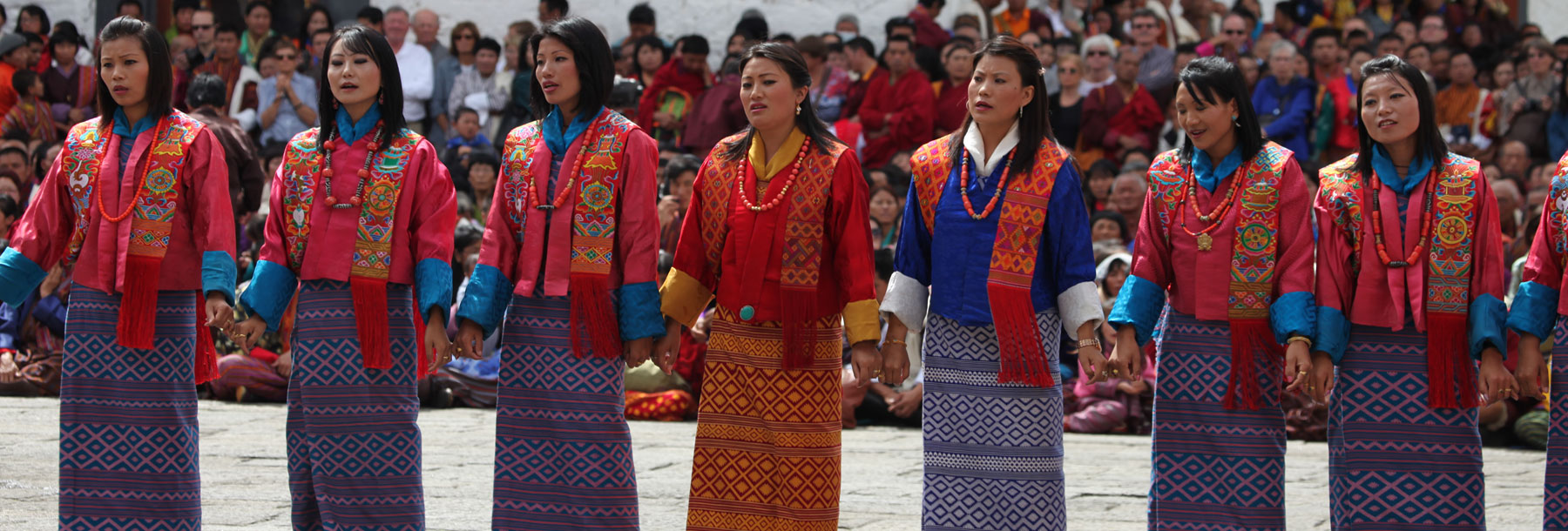
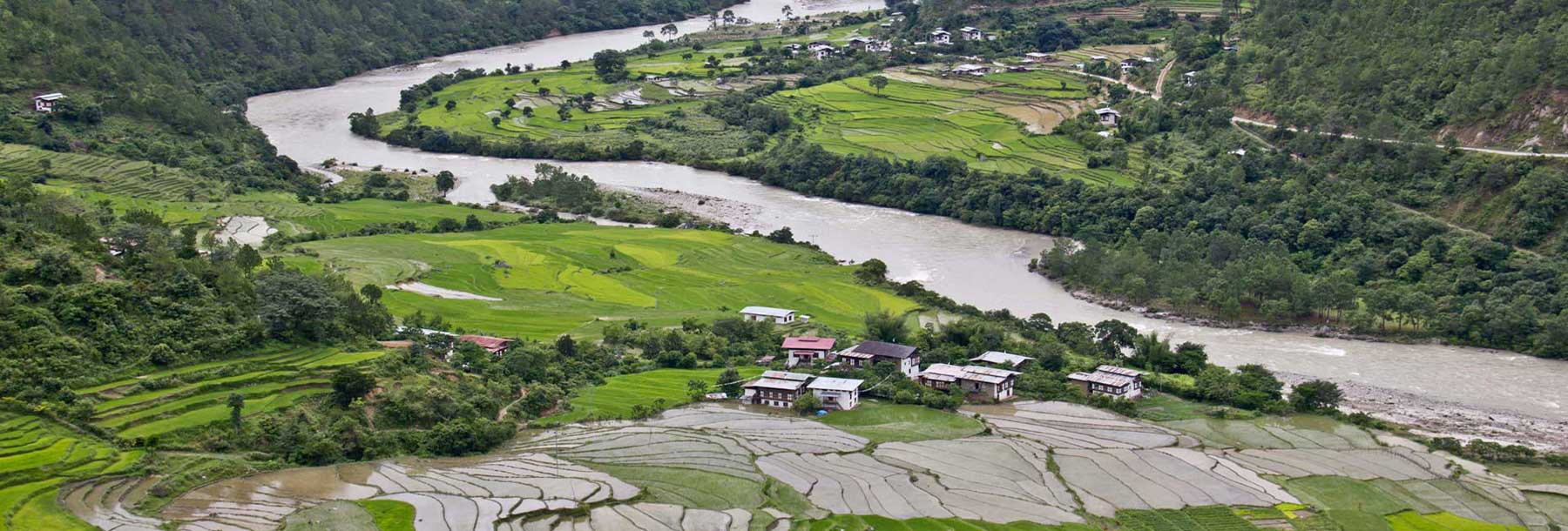
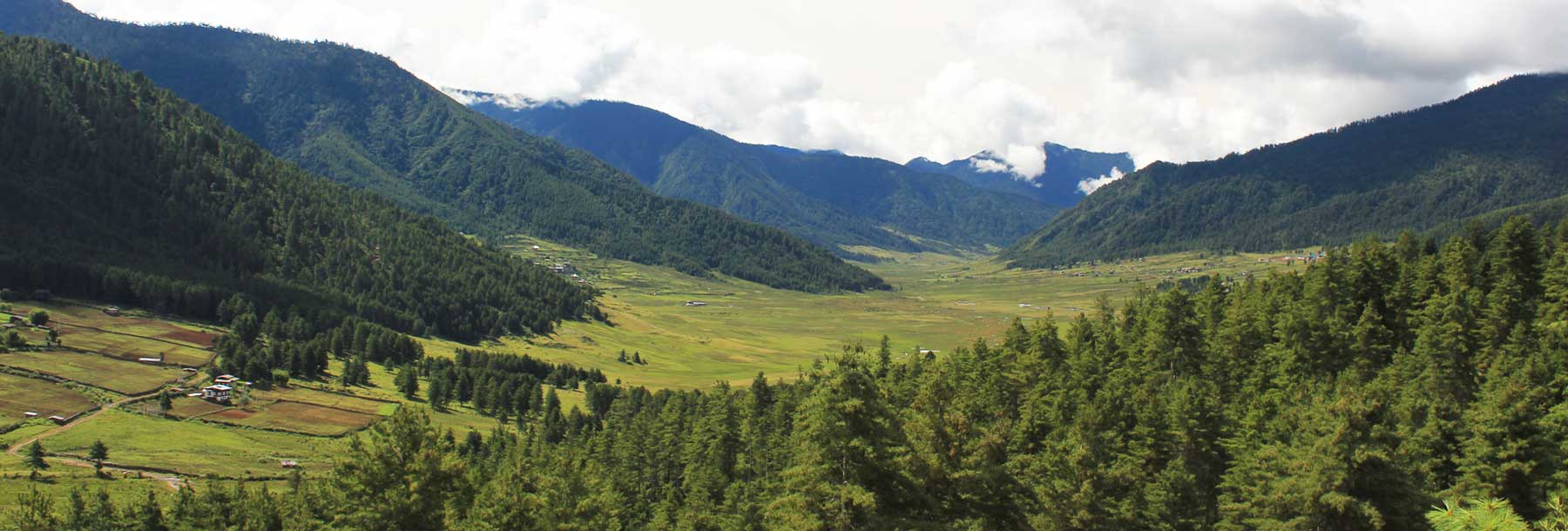
The booking form is highly encrypted and transmitted securely with an SSL protocol.
We will get back to you right away with any applicable discounts and other details including options to pay through direct bank transfer or through our highly secured payment gateway.
Do not hesitate to contact us. We are here to help you plan an amazing trip to Bhutan and will be more than happy to talk to you.
Bhutan – +975-77655137
Thailand – +66-89-494-2064
E-mail us at info@bhutanacorn.com
Fill up contact form
Contact Us
Discover the hidden Kingdom of Bhutan, a country that earned its nickname ‘Kingdom of Happiness’ through living in complete harmony with nature and everyday life of its people nurtured by the mindful Buddhist way of life. Witness one of the largest festivals in Bhutan, Thimphu Tshechu as it showcases Kingdom’s rich cultural values and unique ancient traditions that still remains untouched and vibrant. Go farther beyond the capital city through rugged mountain pass clad in dense forests and beautiful fertile valleys, visit ancient monasteries and Dzongs (fortresses), explore rural Bhutan while you get to dine exotic local cuisine to your heart’s content.
One of the highlights of this trip will be Thimphu Tshechu, the biggest festival in the country which usually takes place during September/October. Dressed in their finest and colourful outfits, thousands of people not only from Thimphu but also from neighboring Dzongkhags (districts) come to witness, to celebrate, to socialize, receive blessings and pray for health and happiness. The monks perform skillful sacred mask dances interspersed with lively traditional folk songs and dances by men and women during the festival. Adding glamour to the festival, the clowns known as ‘Atsara’ are the integral part of this festival cheering and jestering the spectators. They often display obscene behavior holding phallus as a scepter to prevent evil forces from causing harm during the festival.
On the 6th day of this 7 Days 6 Nights trip, you will hike up to the famous Paro Taktsang or Tiger’s Nest precariously perched on the face of the 800m rock cliff and enjoy the peaceful moment induced by the sacredness of the monastery.
Paro International Airport
For the year 2021, Thimphu Tshechu Festival is scheduled to take place from 16th – 18th September. You can plan to arrive on the 15th, 16th or on 17th September 2021.
Easy
This tour runs annually in September or October
US$1780 – for single person traveller (Base Price)
3.5% discount – for a couple or group of 2 people
14% discount – for a group of 3-5 people
18% discount – for a group of 6-10 people
20% discount – for a group of 11 people & above
Arrive Paro International airport by either of only two airlines operating in and out of Bhutan; Drukair, the national flag carrier or Bhutan Airlines, a private airline which started in 2011. After arrival, your visa will be stamped on your passport at the immigration counter. You will be received by our guide and driver at the exit gate and then drive to Thimphu.
Before we drive to Thimphu, visit the National Museum of Bhutan housed in an ancient watch tower called Paro Ta Dzong (Ta Dzong means “watch tower fortress”). It displays hundreds of ancient Bhutanese artifacts and artworks including traditional costumes, armour, weaponry and handcrafted implements for daily life. The collection at the National Museum preserves a snap-shot of the rich cultural traditions of the country. Then we drive to Thimphu.
| Distance | 55 km |
|---|---|
| Transportation | Private SUV/Minivan/Bus |
| Time | 1.5 hours |
| Thimphu Altitude | 2,334m/7,655ft |
| Paro Altitude | 2,195m/7,200ft |
Thimphu is the capital city of Bhutan and it is 55km away from the main Paro town. The drive should not take more than 2 hours including stop overs on the way. Thimphu is home to approximately 115,000 residents. This bustling little city is the main centre of commerce, religion and government in the country. Arriving Thimphu, our guide will assist you to check into the hotel so that you can relax for a while and then have your first taste of Bhutanese cuisine for lunch. In the afternoon, you will be taken on your first excursion in the Land of the Thunder Dragon.
The National Institute of Zorig Chuzum (Zorig Chusum means 13 Traditional Arts & Crafts) was established to promote and preserve the thirteen traditional arts and crafts of Bhutan. The thirteen arts and crafts are categorized as Shing Zo (woodwork), Dho Zo (stonework), Par Zo (carving), Lha Zo (painting), Jim Zo (sculpting), Lug Zo (casting), Shag Zo (wood turning), Gar Zo (blacksmith), Troe Zo (ornament making), Tsa Zo (bamboo work), De Zo (paper making), Tsem Zo (tailoring, embroidery and applique) and Thag Zo (weaving).
These thirteen arts and crafts are an essential part of Bhutan’s cultural heritage that have been practiced from time immemorial. If the class is in session when you arrive, you will be allowed to enter the classroom and observe students as they get hands-on training.
The magnificent 169 feet tall bronze statue of Lord Buddha is located on a hilltop overlooking the Thimphu valley. From here you can see a nice view of Thimphu city. It was built to celebrate the 60th birth anniversary of the Fourth King His Majesty Jigme Singye Wangchuck and also for the purpose of bringing peace in the world . The giant Buddha statue houses more than 100,000 8-inch tall Buddha statues of same type. The construction began in 2006 and was completed in 2015 after almost 10 years.
Note: The coverage of excursion on the first day depends on your flight arrival time. If you arrive in the morning, you should be able to visit all of the sites.
Free time to explore Thimphu town.
Overnight at a hotel in Thimphu. (Lunch, Dinner)
| Hotels: | ||
|---|---|---|
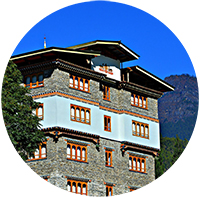 |
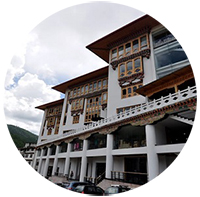 |
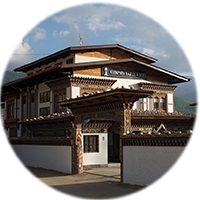 |
| Thimphu Altitude | 2,334m/7,655ft |
|---|
Thimphu is the capital city of Bhutan and it is home to approximately 100,000 residents. This bustling little city is the main centre of commerce, religion and government in the country. It is the only capital city (actually the whole country) in the world without traffic lights and even commercial billboards. Before, you go to witness the Thimphu Tshechu festival, you’ll visit the National Memorial Chorten.
The National Memorial Choeten is the most frequented religious site and obviously an important landmark in Thimphu. The National Memorial Choeten is a Buddhist Stupa built in 1974 in memory of the Late Third King Jigme Dorji Wangchuck who passed away in 1972. People from all walks of life come here to pray and circumambulate offering you a good opportunity to observe how Bhutanese people devote themselves to daily prayers and take refuge in the teachings of the Lord Buddha.
Today, you will witness one of the biggest festivals in the country, the Thimphu Tshechu. This festival is held in the capital city for three days. The Tshechu is witnessed by thousands of people, both local and tourists. The actual Tshechu is preceded by days and nights of prayer and rituals to invoke the gods. Mask dances like the Guru Tshengye (Eight Manifestations of Guru Rinpoche) and many other dazzling sacred mask dances are performed. Festivals are true reflections of ancient culture and traditions that have been handed down from generation to generation and are still vibrant today.
In Bhutan, it is understood that the Tsechu is an ideal mechanism to promote happiness and harmony, strengthen the community and social bonds. These representations of traditional culture are given high priority and great respect from every level of Bhutanese society and function as a manifestation of Gross National Happiness (GNH) policy.
After lunch, you can continue witnessing the festival or enjoy the leisure afternoon strolling the Thimphu town.
Overnight at the hotel in Thimphu. (Breakfast, Lunch, Dinner)
| Hotels: | ||
|---|---|---|
 |
 |
 |
Today, after early breakfast, we hike to one of the important religious centers in Bhutan. Later after lunch, transfer to Punakha valley via the sacred mountain pass called Dochula.
Tango Monastery is located on the mountainside north of Thimphu. There is also a monastery called Cheri located on a mountainside in the neighbourhood. Hiking to Tango is much easier as most part of the footpath is paved and the uphill ascent is not as steep. It is roughly 14km from the main Thimphu town. Following the trail through the forests, the walk uphill takes about 1.5 hours at a slow pace. After the hike, return to Thimphu for a traditional lunch at one of the local restaurants. After lunch. transfer to Punakha via Dochula Pass.
| Distance | 74 km |
|---|---|
| Transportation | Private SUV/Minivan/Bus |
| Time | 3 hours |
| Punakha Altitude | 1,200m/3,935ft |
After lunch, transfer to Punakha valley. En route stop briefly at Dochu La Pass (3,150m/10,335ft) from where you can see, on a clear day, some of the highest peaks of Bhutan.
From Dochu La Pass, we will continue driving towards Punakha, passing through some villages, the elevation drops gradually and the road winds through the pine trees. As you reach the lower subtropical valley, you will feel the drastic change in altitude from 3,150m just an hour and a half ago to the subtropical valley at 1,200m.
Just about 11km before arriving Punakha town, visit Chimi Lhakhang popularly known as the “Temple of Fertility” located on a gentle hilltop near the village of Sopsokha. To reach the temple, you have to walk 20 – 30 minutes through beautiful terraced paddy fields and traditional farmhouses.
You will explore the nearby village and interact with the local people.
Overnight at a hotel in Punakha. (Breakfast, Lunch, Dinner)
| Hotels: | ||
|---|---|---|
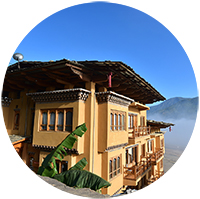 |
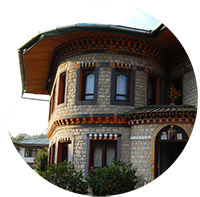 |
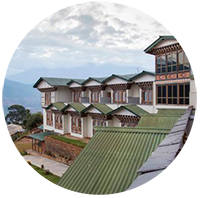 |
| Distance | 80 km |
|---|---|
| Transportation | Private SUV/Minivan/Bus |
| Time | 3 hours |
| Phobjikha Altitude | 3,000m/9,840ft |
Today on the 4th day, we will go for an exhilarating hike to the picturesque Khamsum Yuelley Namgyel Chorten, visit the majestic Punakha Dzong and then drive to Phobjikha valley.
Located on a ridge overlooking the picturesque Punakha valley, Khamsum Yuelley Namgyel Chorten is a fine example of Bhutanese architecture used in building temples and monasteries. It takes only about 20 minutes to drive from the main town of Punakha to the nearest road head. From there you cross a suspension bridge over the Punakha Mochu River (female river) and the trail takes you through terraced paddy fields. Normally it takes just under one hour to reach the serene site of the marvelous Khamsum Yuelley Namgyel Chorten. The view below is stunning with glacial fed Mochu river snaking through the fertile valley of Punakha.
The historic Punakha Dzong was originally known as Pungthang Dewa Chenpoi Phodrang, meaning the “Palace of Great Bliss”. It was built in 1637 AD by Zhabdrung Ngawang Namgyel (Tibetan Buddhist master who came to Bhutan in 1616 and founded the nation-state of Bhutan) on a small stretch of land where the rivers Phochu and Mochu converge. Punakha Dzong is the second oldest and second largest Dzong in Bhutan. The sacred wall paintings and main artifacts inside the dzong, the intricate woodworks and the architectural structure of the dzong display fine example of Bhutanese arts and craftsmanship which continues to influence Bhutanese architecture even today.
After lunch, transfer to Phobjikha valley. En route stop briefly at Wangdue Phodrang town.
The Wangdue Phodrang Dzong, built in 1638, was the third oldest Dzong in Bhutan and stood majestically on the ledge with steep cliffs on three sides. The original Dzong which was one of the most important and historic heritage sites in Bhutan was burnt down by the tragic fire accident on 24 June 2012. Under the guidance of His Majesty the King and His Majesty the Fourth Druk Gyalpo, all the precious sacred artifacts and objects inside the main temple of the Dzong were saved and there was no human casualty. Currently, the Dzong is under reconstruction which started from January 2014 and it is expected to take until the end of 2018 to rebuild to its former glory incorporating state-of-the-art technology in terms of disaster resilience measures and traditional architecture.
Phobjikha is a vast U-shaped glacial valley at an elevation of about 3,000m/9,840ft and it is a winter home for endangered Black Necked Crane from November to March and migrates back to Tibet by the beginning of spring season. Researchers have confirmed that some of the birds which migrates here in winter goes as far back as Mongolia in summer. Every year on the 11th of November, Black Necked Crane Festival is held to celebrate the arrival of this endangered and majestic bird which becomes an inseparable part in the lives of the local people during winter months.
One very famous landmark in this valley is the 17th century Gangtey Monastery popularly know as Gangtey Goenpa (goenpa literally means “remote place” and is usually a place of religious significance). Founded in 1613, this is one of the largest monasteries in Bhutan. The monastery also has a monastic college where hundreds of monks study Buddhist philosophy for 9 years. While visiting this monastery, you will have an opportunity to interact with enthusiastic happy monks. An annual religious festival, Gantey Tshechu, is held at Gangtey Goenpa during autumn when the harvest season is just over. A series of dazzling sacred mask dances interspersed by Bhutanese folk dances are performed during this festival.
You have a choice to put up yourself in a 3-star standard hotel or grab an unusual opportunity to stay at a farmhouse with a local family (subject to availability) and get a glimpse of typical village life in Bhutan. If you are interested for a home spa, you can soak up in a traditional hot stone bath for an additional fee of about US$15. Specially selected river stones are heated in a wood fired fireplace and dropped into a chamber of wooden tub releasing minerals. You can lighten up with a warm cup of locally brewed liquor known as “Ara”.
Overnight at a hotel o Farmhouse/Homestay in Phobjikha. (Breakfast, Lunch, Dinner)
| Hotels: | ||
|---|---|---|
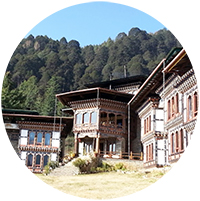 |
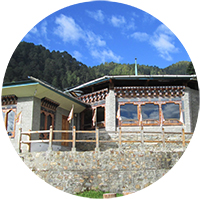 |
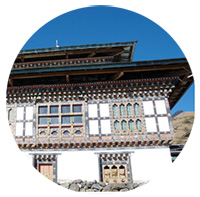 |
| Distance | 188 km |
|---|---|
| Transportation | Private SUV/Minivan/Bus |
| Time | 6 hours |
| Paro Altitude | 2,195m/7,200ft |
Today, on the 5th day of your trip, we will do an exciting Gangtey Nature Hike through the pristine valley and after lunch, drive back to Paro valley. En route, if time permits, visit the first and oldest Dzong in Bhutan built by Zhabdrung Ngawang Namgyel in the 17th century AD.
After breakfast, take a leisure walk in the valley and visit the Black Necked Crane Information Center, which has a lot of information on the migratory bird and about the valley and its role in the conservation of Black Necked Crane. For nature enthusiasts and those who enjoy long walk through the woods surrounded by splendid nature all around, taking up Gangtey Nature Trail is highly recommended. The trail is about 5km and takes approximately 3 hours. It gives you a great feeling of the Phobjikha valley and ample opportunities to take beautiful pictures.
After driving for about 130km, we will stop at the outskirt of Thimphu and visit Simtokha Dzong which is built strategically on a ridge overlooking the Thimphu valley. The Simtokha Dzong is significant not only because it was the first Dzong built by Zhangdrung Ngawang Namgyel but also stands on the borders of three major regions: Thimphu, Paro and Wangdue Phodrang. Zhabdrung Ngawang Namgyel built this Dzong in 1631 to consolidate his rule over western Bhutan. Simtokha Dzong is considered as the oldest Dzong in Bhutan.
One of the main statues inside the Simtokha Dzong is the statue of Buddha of Compassion. Legend has it that fortunate visitors are able to see a light shining forth from the chest of the Buddha. The Dzong has more than three hundred slate carvings from the 17th century. Recently, His Majesty the 5th King donated the statue of Zhabdrung Ngawang Namgyel which wasn’t there initially.
Dinner & overnight at a hotel in Paro. (Breakfast, Lunch, Dinner)
| Hotels: | ||
|---|---|---|
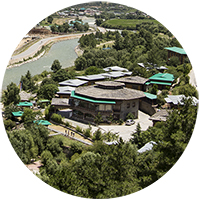 |
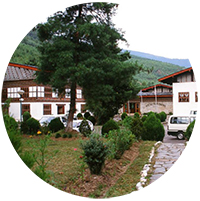 |
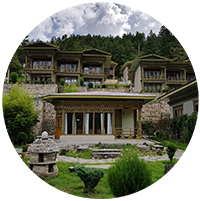 |
Today, you will hike to the famous Tiger’s Nest, visit the National Museum of Bhutan and towards the late afternoon visit one of the beautiful farmhouse for dinner comprised of authentic local cuisine.
| Taktsang Altitude | 3,120m/10,235ft |
|---|
After breakfast, drive to Ramthangka, the base of the Taktsang monastery. Taktsang monastery is located on the face of a sheer 800-meter rock cliff in Paro. It normally takes about 2 hours to reach the monastery from the road head. It is the most popular tourist attraction in Bhutan.
Taktsang which literally translates to ‘Tiger’s Nest’, is regarded as one of the most important monasteries in Bhutan. Its history is associated with the visit of Guru Padmasambhava (known as Guru Rinpoche), the Indian saint who came to Bhutan and introduced Tantric Buddhism in the mid-eighth century AD. It is believed that Guru Padmasambhava flew to Taktsang from Kurtoe Singye Dzong in eastern Bhutan, riding on a tigress. Taktsang monastery was originally built in 1692 on the sacred cave where Guru Padmasambhava meditated.
The trail takes you through the ancient path shaded by pine trees. After an hour of steep uphill hiking, you will reach a nice cafeteria from where you can see spectacular views of Taktsang monastery perched on the face of a steep rock cliff and beautiful valley below. Hot tea and snacks will be served here. For those who are still energetic, can hike further up for 1 hour and visit the monastery, receive blessings from many sacred relics and artifacts and enjoy grand views of the Paro valley below.
After lunch at the cafeteria, we retrace our steps back to the base where our driver will be waiting. From there drive to visit one of the oldest temples in Bhutan – 7th-century Kyichu Lhakhang.
Paro Kichu Lhakhang is located just a few minutes drive from the main town of Paro and is one of the oldest monasteries in Bhutan. It is believed to have been built in 659 A.D. by King Songtsen Gampo of Tibet in his effort to built 108 such temples across the Himalayan region to subdue the spirit of a demoness who was causing obstruction to the spread of Buddhism. Bhutan is blessed with two of these temples, one being Jampa Lhakhang in Bumthang, central Bhutan. Both Kichu Lhakhang and Jampa Lhakhang are believed to have been built on the same day.
Free time to explore Paro town.
Towards the evening, visit one of the beautiful farmhouses and enjoy an authentic home-cooked local cuisine for dinner. You can participate/learn how to cook some of the popular Bhutanese dishes. If interested, you can soak up in a traditional hot stone bath believed to have a therapeutic effect for an additional fee of about US$15.
Overnight in a hotel in Paro. (Breakfast, Lunch, Dinner)
| Accommodation will be provided at one of these 3-Star hotels or similar one: | ||
|---|---|---|
 |
 |
 |
After breakfast, depending on your flight time you will be transferred to Paro International Airport for your onward journey. Your guide will assist you to complete all exit formalities before you check-in.
(Breakfast)
All tour services we provide are independent with flexible itineraries which can be customized to suit your interest and requirement. You can form a group to get discounts. Apart from the predesigned packages which have proven successful, Bhutan Acorn Tours & Travel can also arrange the following add-on activities to enrich your experiences in Bhutan. These activities can be fitted into any tour itineraries.
Please note that some of the activities may involve extra fees.
All your deposits and any payment less administrative fees of US$100 per person will be refunded if you notify us at least 30 days prior to your arrival date. Refer the cancellation fee schedule below to determine the applicable charges:
| DAYS TO ARRIVAL | CANCELLATION CHARGES PER PERSON |
|---|---|
| 30+ | US$100 administrative fee per person |
| 16-29 | 20% of the total cost |
| 8-15 | 50% of the total cost |
| 0-7 days | No refund is available |
In case the trip is cut short or duration lost due to unforeseen reasons after arrival in Bhutan, no refund is available as the payment would have been already made to hotels and other logistics.
There shall be no charges for the number of days of delay either during arrivals or departures or both, due to weather conditions, communication problems, cancellation or delay in Bhutanese airline flights, sickness or any other legitimate reason as Tourism Council of Bhutan (TCB) may deem reasonable. However, the Tourist will be charged on the actual expenses on accommodation, food, transport and any other services provided.
